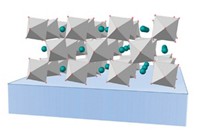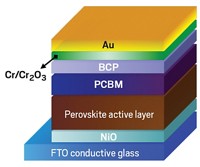Advertisement
Grab your lab coat. Let's get started
Welcome!
Welcome!
Create an account below to get 6 C&EN articles per month, receive newsletters and more - all free.
It seems this is your first time logging in online. Please enter the following information to continue.
As an ACS member you automatically get access to this site. All we need is few more details to create your reading experience.
Not you? Sign in with a different account.
Not you? Sign in with a different account.
ERROR 1
ERROR 1
ERROR 2
ERROR 2
ERROR 2
ERROR 2
ERROR 2
Password and Confirm password must match.
If you have an ACS member number, please enter it here so we can link this account to your membership. (optional)
ERROR 2
ACS values your privacy. By submitting your information, you are gaining access to C&EN and subscribing to our weekly newsletter. We use the information you provide to make your reading experience better, and we will never sell your data to third party members.
Environment
Ionic-Liquid Solar Cells
July 7, 2008
| A version of this story appeared in
Volume 86, Issue 27
Chemists in China and Switzerland have designed a robust and efficient dye-sensitized solar cell (DSC) based on a solvent-free mixture of three imidazolium compounds (Nat. Mater., DOI: 10.1038/nmat2224). Each of the substances is a solid under ambient conditions. But when mixed in equimolar ratios, they form a eutectic melt, thereby providing a three-component, room-temperature ionic liquid. The potential for low cost and flexibility makes DSCs attractive alternatives to conventional solar energy conversion devices based on crystalline silicon. A key limitation of most DSC designs is the need for electrolytes dissolved in organic solvents, which can evaporate and permeate cell components. Researchers have had success sidestepping the evaporation and leakage problems by using solvent-free ionic liquids, but most of these compounds decompose under prolonged exposure to sunlight. Now, a team led by Peng Wang of the Institute of Applied Chemistry, in Changchun, China, and Michael Grätzel of the Swiss Federal Institute of Technology, Lausanne, formed a novel ionic liquid by blending 1-ethyl-3-methylimidazolium iodide with the dimethyl and allyl-methyl analogs. Compared with other ionic-liquid DSCs, solar cells based on the new substance are more resistant to decomposition and exhibit 1–2% higher solar conversion efficiencies.






Join the conversation
Contact the reporter
Submit a Letter to the Editor for publication
Engage with us on Twitter